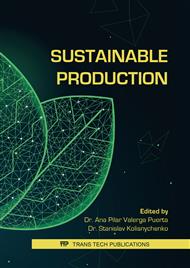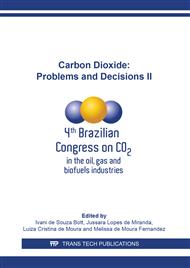p.1
p.13
p.21
p.29
p.39
p.49
p.59
p.69
A Lifecycle Sustainability Assessment of CO2 Emissions, Energy Consumption and Social Aspects of Methylic and Ethylic Biodiesel Using Principal Component Analysis
Abstract:
The possibility of using renewable feedstocks for biodiesel production and reducing gas emissions makes it an attractive large-scale substitute to traditional fossil diesel. Although renewability is one of the main driving forces in biodiesel use, traditional production routes employ methanol as the transesterification agent, a chemical generated from fossil carbon. Aiming at further improving biodiesel’s sustainable performance, the replacement of methanol by ethanol has been proposed. Use of the ethylic production route could further reduce CO2 emissions, energy consumption and generate more jobs. The objective of this study is to unveil whether substituting methanol for ethanol does indeed result in a less carbon and energy intensive production chain while also increasing job generation and decreasing social strife. To assess production chain performance a lifecycle approach was used composed by: (i) Data assemblage from literature to represent the ethylic/methylic biodiesel systems; (ii) Construction of quantitative indicators to compare material and energetic flows; and (iii) Principal Component Analysis (PCA) for data interpretation and relevance ranking of calculated social/environmental indicators. Focus was given to CO2 emissions, energy consumption and social aspects of sustainability. Results show that use of ethanol does indeed reduce CO2 emissions, due to extra agricultural carbon sinks in the production chain but increases energy consumption and energy loss. Methanol also resulted in a chain with higher average wages, more jobs generated and less forced labor cases but with a higher accident rate and a high salary disparity. PCA showed that carbon intensity is one of the most important environmental metrics while energy consumption was considered secondary, but the high correlation between these aspects highly impact chain sustainability. PCA also greatly differentiated agricultural and industrial links of respective production chains, with industrial links being governed by CO2 emissions and process safety and agricultural links by water consumption, land use and energy loss. A distinct tradeoff was seen between environmental and social considerations of sustainability and between carbon intensity and energy consumption reductions. As a result, substitution is only justified in scenarios in which CO2 emissions outweigh energy intensity and social aspects.
Info:
Periodical:
Pages:
1-12
Citation:
Online since:
July 2019
Keywords:
Price:
Сopyright:
© 2019 Trans Tech Publications Ltd. All Rights Reserved
Share:
Citation:




